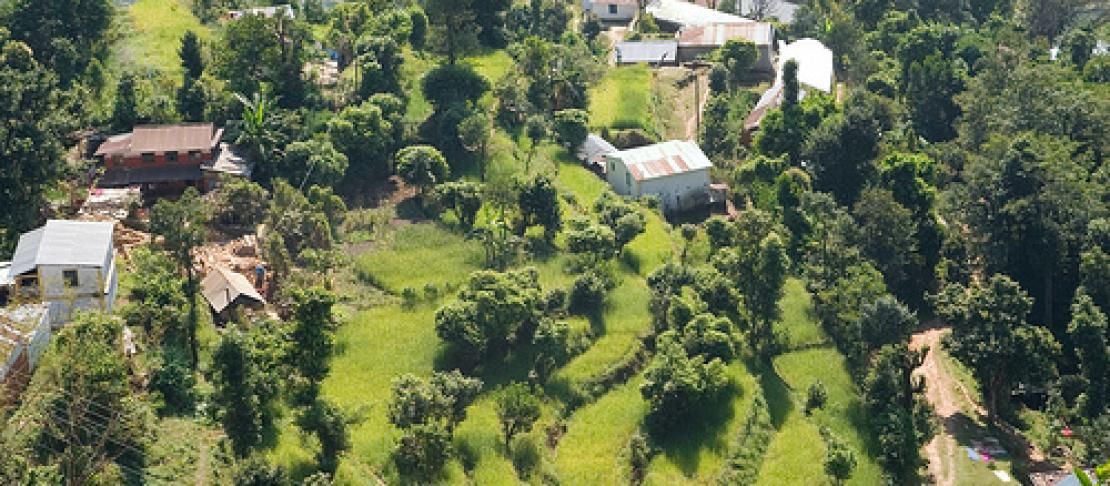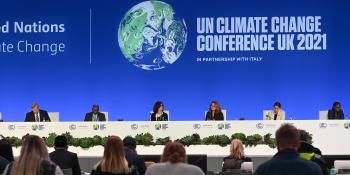Viewing more than farms: All eyes on the climate smart landscapes approach

by Cecilia Schubert
Live blog from ongoing UNFCCC climate negotiations in Germany
After attending a thought-provoking climate conference session convened by the World Bank last week, we have one question on our minds: “Can we assist smallholders adapting to climate change while reducing agriculture’s damaging effects, without taking into account other sectors such as forests, grasslands and degraded soils?”
A policy brief prepared by EcoAgriculture Partners, states that for agricultural systems to achieve ‘climate-smart objectives’, they often need to be take a landscape approach. In other words, they should become ‘climate-smart landscapes’. This means taking off those “agriculture-blinkers” that block out other important sectors, to step out of the past and move into ”the bigger picture”.
What’s a climate-smart landscape then? ”Climate-smart landscapes operate on the principles of integrated landscape management, while explicitly incorporating adaptation and mitigation into their management objectives”. It is characterized by using climate -smart practices in the field, diversifying land use to build resilience and sustainable management of different ‘land use interactions’ between field, forest, grasslands and other land uses at the landscape scale. The goal is to help achieve social, economic and ecological impacts and improvements.
The concept of climate-smart landscapes covers what climate smart agriculture aims to achieve: Food security, improved livelihoods, low emissions development, resilience and recognition of ecosystems.
Download the brief: From climate-smart agriculture to climate-smart landscapes
Sara Scherr, President and CEO of EcoAgriculture Partners spoke at the World Bank side event “Enabling Land Use Activities in developing countries' context: Constraints and Opportunities”. She pointed out that we need to look beyond afforestation and reforestation when assessing mitigation potentials from land use interventions. Many mitigation activities have the potential to build farmers’ resilience to climate shocks, as well as improving yields and quality of livestock, soil and grasslands.
By integrating a holistic landscape view, we can take advantage of synergies and trade-offs from the different areas that make up a landscape.
Related reading: Synergies and trade-offs between agriculture adaptation and mitigation identified
Sara explained that emissions could be reduced through different activities, such as iimplementing climate-friendly livestock systems, enrich soil with carbon my minimizing tillage and reducing nitrogen fertilizers and preventing erosion, and restoration of degraded rangelands and watersheds and more.
She emphasized however that “mitigation is not the primary motivation for action, but a co-benefit when mobilizing resources.”
So while the UNFCCC discusses what actions are next for climate mitigation, countries and communities are taking matters into their own hands. Sara mentioned that 79 communities have been identified as implementing climate smart landscape innovations on the ground, which include climate smart objectives of low emissions development and adaptation.
Learn more about climate-smart rice landscapes in Madagascar and Sahel and West Africa program in support of the Great Green Wall Initiative from Sara Scherr’s presentation below:
Read more: Making landscapes climate-smart
To more forward and scale up, more political commitment is needed, particularly at the international level. This can support strengthening technical capacities and cross-cutting activities and communication.
A landscape approach will support the adoption of climate smart agriculture, but the question is how to mainstream CSA into the concept of climate smart landscapes.
We are taking initial steps on climate smart landscapes at the upcoming UNFCCC climate conference in Poland in November, where CCAFS, CIFOR and partners will present the latest research on the concept, what policy makers need to know and how to achieve a holistic view.
Read more about the COP19 parallel event: Global Landscapes Forum: Shaping the climate agenda for forests and agriculture
Related reading: FAO's brief "Mainstreaming climate-smart agriculture into a broader landscape approach" (PDF)
CCAFS and EcoAgriculture linked up and prepared a Policy Brief: Carbon projects can bear fruit on small farms
Cecilia Schubert is a Communications Assistant at CCAFS Coordinating Unit. Follow CCAFS on Twitter for live updates from the Bonn Climate Talks using #SBSTA. More stories from climate conference sessions will be up soon on the blog. Read additional UNFCCC climate conference blogs from Bonn, Germany.


